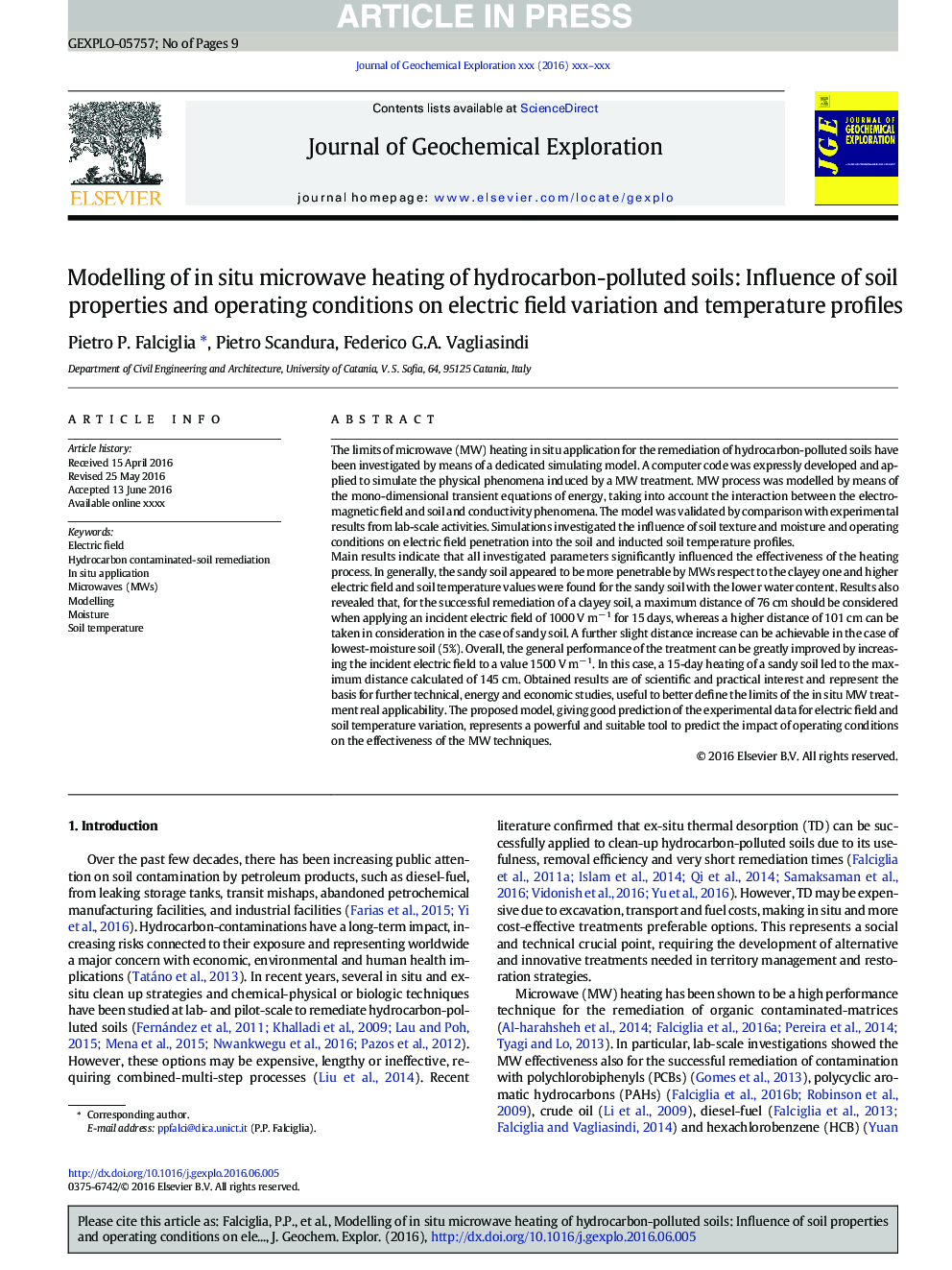| Article ID | Journal | Published Year | Pages | File Type |
|---|---|---|---|---|
| 5754496 | Journal of Geochemical Exploration | 2017 | 9 Pages |
Abstract
Main results indicate that all investigated parameters significantly influenced the effectiveness of the heating process. In generally, the sandy soil appeared to be more penetrable by MWs respect to the clayey one and higher electric field and soil temperature values were found for the sandy soil with the lower water content. Results also revealed that, for the successful remediation of a clayey soil, a maximum distance of 76 cm should be considered when applying an incident electric field of 1000 V mâ 1 for 15 days, whereas a higher distance of 101 cm can be taken in consideration in the case of sandy soil. A further slight distance increase can be achievable in the case of lowest-moisture soil (5%). Overall, the general performance of the treatment can be greatly improved by increasing the incident electric field to a value 1500 V mâ 1. In this case, a 15-day heating of a sandy soil led to the maximum distance calculated of 145 cm. Obtained results are of scientific and practical interest and represent the basis for further technical, energy and economic studies, useful to better define the limits of the in situ MW treatment real applicability. The proposed model, giving good prediction of the experimental data for electric field and soil temperature variation, represents a powerful and suitable tool to predict the impact of operating conditions on the effectiveness of the MW techniques.
Related Topics
Physical Sciences and Engineering
Earth and Planetary Sciences
Economic Geology
Authors
Pietro P. Falciglia, Pietro Scandura, Federico G.A. Vagliasindi,
